
Cheney is a city in Spokane County, Washington, United States. The full-time resident population was 10,590 as of 2010 census. Eastern Washington University is located in Cheney. When classes are in session at EWU, the city's population reaches approximately 17,600 people on a temporary basis.
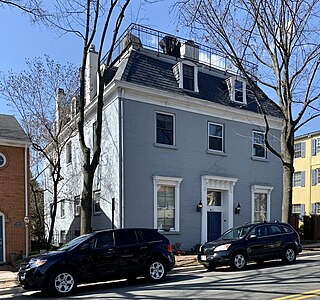
Odd Fellows Hall is a historic Odd Fellows hall located at Alexandria, Virginia. It is a 2 1/2-story, brick building. It was built in 1864 as a one-story building, and expanded to its present size in 1870. African-American orders like the black Odd Fellows allowed blacks to socialize and put their skills to good use. In 1870, black builder and politician George Seaton was hired to build the Odd Fellows meeting hall in Alexandria, Virginia. For decades the building was used to house the group and many of the social gatherings of the African-American community. In the 1980s the building was converted into condominiums. It is a three-story brick building with decorative detailing and a slate mansard roof. The hall is currently a residential building.

The Odd Fellows Building and Auditorium, located at 228—250 Auburn Avenue, N.E. in the Sweet Auburn Historic District of Atlanta, Georgia, are historic buildings built in 1912 and 1913, respectively, as the headquarters of the District Grand Lodge No. 18, Jurisdiction of Georgia, of the Grand United Order of Odd Fellows in America. B.S. Ingram was District Grand Master and Dr. William F. Penn was chairman of the building committee. Renowned Atlanta-based architect William Augustus Edwards designed the buildings, while Robert E. Pharrow was the contractor and M.B. Morton was superintendent of construction. Booker T. Washington dedicated the Odd Fellows Building in 1912.
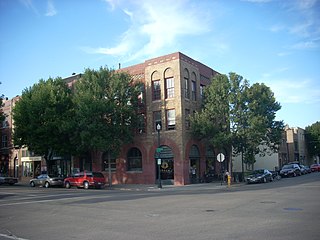
The Odd Fellows Block, located at 23-25 S 4th st and 324 Kittson Ave in the Downtown Grand Forks Historic District of Grand Forks, North Dakota is a historic building built in 1888 as a home for the Odd Fellows meeting hall, which was situated on the third floor. The hall was fitted with a large and well-appointed lodge room, a banquet hall, and numerous smaller rooms.

The Brewster Building is a historic commercial building and IOOF Hall located at 201 Fourth Street in Galt, California. It was built in 1882 and was listed on the National Register of Historic Places in 2000.

The Odd Fellows Hall in La Grange, California was built in 1880. Also known as the I.O.O.F. Building, it was listed on the National Register of Historic Places in 1979. It served historically as a clubhouse and as a meeting hall.

The Odd Fellows Hall in Santa Ana, California, United States, also known as Odd Fellows Building, was built in 1906. It has served both as a clubhouse and as a commercial building.
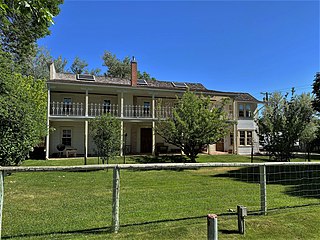
The Odd Fellows Hall, also known as Big Horn Odd Fellows Hall, is located in Big Horn, Wyoming, and was built in 1894. The hall was originally used by Big Horn's chapter of the Independent Order of Odd Fellows and was later used by the Odd Fellows' sister organization, the Rebekahs. The organizations hosted community events until the Odd Fellows merged with another chapter in 1949 and the Rebekahs disbanded in 1970; the groups mainly folded because they lacked the resources to maintain their building. The building features a false front, a common design feature in buildings in Western boom towns; it is one of three remaining historic buildings in Big Horn with a false front.

The Odd Fellows-Rebekah Hall is a historic form fraternal society hall on High Street in Cornish, Maine. Built in 1902 for the local chapter of the International Order of Odd Fellows and their associated Rebekah women's chapter, it is an architecturally eclectic mix of vernacular and high-style elements. It was listed on the National Register of Historic Places in 1983, and now functions as a community meeting space.

The Fullerton Odd Fellows Temple, also known as IOOF Building or Independent Order of Odd Fellows Lodge No.103 or Williams Building, is located in Fullerton, Orange County, California. It was designed by Oliver S. Compton-Hall and built during 1927-28 for the Independent Order of Odd Fellows Lodge Number 103, which existed from 1901 to 1981.

The Brooklin IOOF Hall is an commercial and fraternal society building at the junction of Center Harbor Road and Reach Road in Brooklin, Maine. The three-story Second Empire style building was erected in 1875, and is one of the small community's largest 19th-century buildings and one of its architecturally most significant. It was listed on the National Register of Historic Places in 1990.
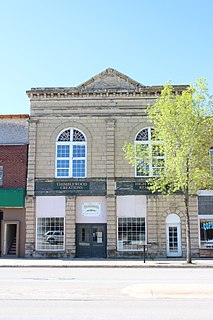
The Montpelier Odd Fellows Hall is an Independent Order of Odd Fellows meeting hall located at 843 Washington St. in Montpelier, Idaho. The Renaissance Revival building was constructed in 1898–99. The stone building features round arch windows with fanlights on its second story. A pediment with the Odd Fellows' symbols projects above the building's cornice. As of 1978, the Odd Fellows still met in the building.

The Odd Fellows Hall is a historic building located at 516 Main St. in Salmon, Idaho. The building was constructed in 1874 as a meeting place for Salmon's chapter of the International Order of Odd Fellows. The wood frame building was designed in the Greek Revival style and features Ionic pilasters on its front face. A wooden front designed to resemble cast iron was added to the building in 1888. The Odd Fellows built a new meeting hall, the Salmon Odd Fellows Hall, in 1907. The original building is one of the few remaining fraternal halls from the 1800s in Idaho.
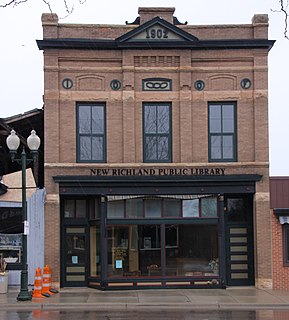
The New Richland Odd Fellows Hall is a historic Independent Order of Odd Fellows (IOOF) clubhouse in New Richland, Minnesota, United States, built in 1902. It was listed on the National Register of Historic Places in 2006 under the name Strangers Refuge Lodge Number 74, IOOF for its local significance in the themes of entertainment/recreation and social history. It was nominated for being the home of a large and important local fraternal organization, and for serving as a venue for a wide range of other groups and events. The building now houses the New Richland Public Library.

The Odd Fellows Hall is one of the oldest non-residential buildings in the city of Hilliard, Ohio, United States. Located in the center of the city, it was constructed long before Hilliard's rapid growth of the twentieth-century. It has been named a historic site.

The Harrisburg Odd Fellows Hall, also known as I.O.O.F. Covenant Lodge No. 12, in the small community of Harrisburg, Oregon, USA, was built in 1882. Odd Fellows chapter members L. Stites, a local brickmason and brickyard owner, and John Martin, a carpenter, significantly helped in its construction. The Harrisburg Disseminator then declared it to be "'the finest building in this part of the Willamette Valley'".

The I.O.O.F. – Paris Fair Building in Hood River, Oregon was built in 1906, with Early Commercial architecture. Also known as Idlewild Lodge No. 107, Odd Fellow's Hall, and Paris Fair Department Store, it served historically as a department store and as an International Order of Odd Fellows meeting hall. It was listed on the National Register of Historic Places in 1990.

The Ursa Town Hall, also known as the Ursa Odd Fellows Lodge, is a historic building located at 109 South Warsaw Street in Ursa, Illinois. The building was constructed in 1895; from its completion, it was intended to serve both as Ursa's town hall and as a meeting place for the local lodges of the Independent Order of Odd Fellows and the Freemasons. The Odd Fellows funded the building and owned the hall, lending space to the other groups; however, Ursa Township eventually purchased the first floor of the building, as the Odd Fellows only met on the upper floor per the order's custom. The town used the lower floor for its meetings and as a polling place; the meeting space has also held school events, as the local school lacked an auditorium, and business meetings. The hall also served as the community's social center; the Odd Fellows hosted many community events, and residents watched traveling performers and movies in the hall.
The Murray General Merchandise Store, also known as Murray Hall, is a historic building located in Little Sioux, Iowa, United States. A native Scot, Michael Murray operated a general store from this location from 1877, when it was built, to 1916 when he died. The second floor housed the local chapters of the Masons, Independent Order of Odd Fellows, Order of the Eastern Star, Grand Army of the Republic, and the Woodmen. By the 1970s the Masons and the Eastern Star were the only two remaining, but they folded in the 1980s. The Harrison County Historic Preservation Commission took possession of the building in the 1990s to preserve it. Since then it has served a community social hall, and served as city hall briefly in 1996 when the old city hall was destroyed in a fire.



















